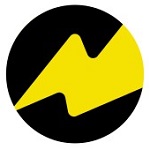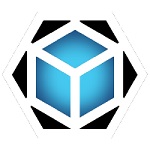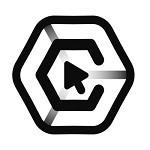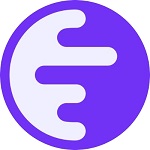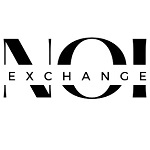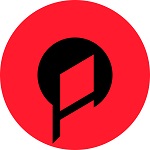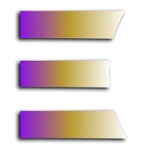Optimism Ecosystem
| Projects | Projects | Status | Date start | Raised | Launchpad | Ecosystem | X score | Interest lvl | Industry | |||
|---|---|---|---|---|---|---|---|---|---|---|---|---|
| TBA | Blockchain +4 | |||||||||||
IDO Past | Sep 13, 2025 | Gambling +2 | ||||||||||
ICO | TBA | Blockchain +4 | ||||||||||
| TBA | Exchanges & Wallets +4 | |||||||||||
| TBA | Blockchain +3 | |||||||||||
| TBA | Web 3.0 +1 | |||||||||||
| TBA | $1,1M | Finance +6 | ||||||||||
| TBA | Privacy & Security +6 | |||||||||||
| TBA | Blockchain +3 | |||||||||||
IDO Past | May 16, 2025 | $4M | DeFi +1 | |||||||||
ICO | May 15, 2025 | Blockchain +3 | ||||||||||
IDO | TBA | DeFi +1 | ||||||||||
| TBA | Blockchain +4 | |||||||||||
| TBA | Identity & Reputation +6 | |||||||||||
| TBA | DeFi +2 | |||||||||||
| Dec 09, 2024 | Crowdfunding & Lending +4 | |||||||||||
IDO Past | May 23, 2025 | Exchanges & Wallets | ||||||||||
IDO | TBA | Blockchain +3 | ||||||||||
| TBA | $44M | Blockchain | ||||||||||
| TBA | Blockchain +1 | |||||||||||
ICO IDO Past | May 28, 2024 | Blockchain +3 | ||||||||||
| TBA | $178,5M | Blockchain +2 | ||||||||||
| TBA | $6,3M | Exchanges & Wallets +2 | ||||||||||
ICO Past | Dec 18, 2021 | Crowdfunding & Lending +1 | ||||||||||
| TBA | Blockchain +2 | |||||||||||
What is Optimism network
Optimism is a platform from the family of L2 solutions on the market. It is an open source blockchain to address Ethereum current problems, including scalability, causing users to pay too high fees and experiencing transaction delays.
Many alternative L1 blockchains, such as Avalanche, have emerged, but L2 scaling solutions, which operate on top of the Ether core network and therefore adopt all of its security measures, have become in high demand. The Polygon and Arbitrum projects operate on a similar principle.
The platform was presented in 2019. The main Optimism network was launched in December 2021. In 2022, the project team started looking for solutions to protect the network from failures. The developers plan to continue improving the platform. What is interesting is that, in March 2022 OP raised $150 million at a valuation of $1.65 billion.
Investors & partners
- Paradigm
- a16z (Andreessen Horowitz)
- IDEO CoLab Ventures
Among the partners who have successfully realized their projects with Optimism include:
- Coinbase (Base Blockchain)
- Rainbow
- Synthetix
- Farcaster and many others.
Key mechanics of Optimism blockchain
Layer 2 Optimism is based on Optimistic Rollup technology. The core of this technology is the formation of a sidechains, one of the operating principles of which is the refusal to verify all transactions. Instead of constant control, Optimistic Rollup analyzes only those transactions that are disputed by the participants of the system.
Sequencers are responsible for conducting transactions. Such nodes sign commitments to execute transactions as claimed. When it is necessary to organize checks, the system involves the second type of network nodes – verifiers. Such nodes are responsible for network security.
Verifiers can challenge the decisions of sequencers. The process can take about a week. If a node detects fraud for which the sequencer is responsible, the latter is penalized. The verifier himself is rewarded. The reward system incentivizes the participants of the system to work honestly.
In addition to OP Rollups, the Optimism ecosystem includes an integral tool like OP Stack. In fact, it’s a working environment that includes Optimism Mainnet L2 and any chains that use open source code to create flexible, modular blockchains. Chains created using OP Stack are called “op-chains.” They can be application specific, general purpose, or anything their communities desire.
OP Stack also provides default secure modules that are closely tied to Ethereum’s infrastructure and architecture. The default op-chain is an Ethereum-based smart contract rollup with an execution equivalent to an EVM.
OP Stack covers any infrastructure that supports Optimism, Superchain and Ethereum.
The ease of development combined with a common sequencer model for Superchain means that protocol developers face fewer barriers to entry. The OP stack represents a new paradigm for collaboration in open source and protocol design.
Notably, Optimism ecosystem includes support for the most popular crypto applications; MetaMask, Trust Wallet, Coinbase Wallet and others.
In addition, leading stablecoins are issued on Optimism; USDT, USDC, DAI, FRAX, USDD, etc.
Advantages of Optimism
Optimism offers a number of key benefits:
- Very low transaction costs
- High transaction speeds
- Full compatibility with key tools and dApps on ETH
Token OP
The Optimism blockchain has its own governance token.
OP cryptocurrency is used for:
- Funding the development of the Optimism ecosystem
- Participating in votes for protocol updates and fund distributions
- Participate in project management in the Optimism Collective community
OP launch was on May 31, 2022.
It is noteworthy that the first token airdrop is considered one of the largest in the history of the crypto industry. In fact, since May 31, 2022 some 258,000 users worldwide have received a total of 251,000,000 OP tokens.
Also, the developers conducted an airdrop as part of moving the project to a new management structure to gradually transfer control of Optimism to community members.
Conclusion
Optimism infrastructure extends the ETH infrastructure. In turn, OP Stack software capitalizes on the time-tested code and existing user and developer base. All of this should lead to a proliferation of componentized new applications and business models. Time will tell if Optimistic strategy will be sustainable, but OP Stack represents a new paradigm for collaboration within open source and protocol design.
Also, Optimism’s overall philosophy is worth noting. Its strategy is not to be the first in the market or to gain the most users on universal L2. More likely, the strategy is to sustainably fund infrastructure that will distribute flexible, Ethereum-centric chains.
